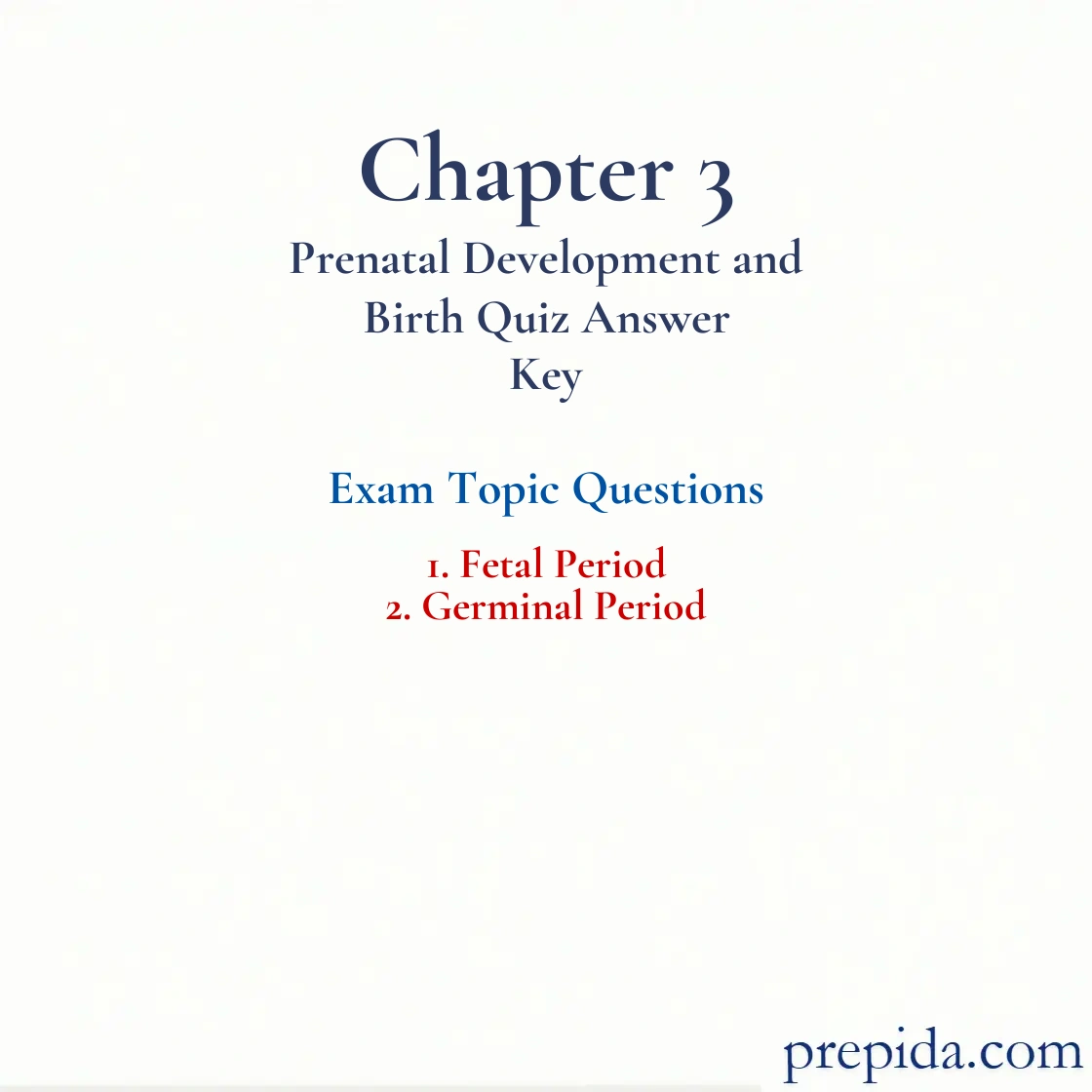
Sidney is expecting her first child. She has recently begun to feel the fetus kicking. Sidney's current stage of pregnancy would fall under the ________ of prenatal development.
- embryonic period
- fetal period
- germinal period
- implantation period
Fetal Period: Lasting about seven months, the prenatal period between two months after conception and birth in typical pregnancies.
The fetus that Calista is carrying has reached the age of viability, meaning that it has a chance of surviving outside of the womb. Therefore, it can be inferred that Calista is ________ weeks pregnant.
- 4 to 8
- 16 to 18
- 24 to 25
- 10 to 12
Meaning-Making Coping: Involves drawing on beliefs, values, and goals to change the meaning of a stressful situation, especially in times of chronic stress such as when a loved one dies.
Which of the following statements is true of the fetus at the end of the fourth month of pregnancy?
- The fetus is about 3 inches long and weighs about four-fifths of an ounce.
- A growth spurt occurs in the fetus' lower body.
- The eyes and eyelids are completely formed, and a fine layer of hair covers the head.
- The fetus for the first time has a chance of surviving outside the womb.
Fetal Period: Lasting about seven months, the prenatal period between two months after conception and birth in typical pregnancies.
Tara has just entered the fetal period. Therefore, it has been ________ months since conception.
- two
- three
- four
- five
Fetal Period: Lasting about seven months, the prenatal period between two months after conception and birth in typical pregnancies.
The ________ is the outer layer of cells of the blastocyst that later provides nutrition and support for the embryo.
- ectoderm
- perineum
- cytocyst
- trophoblast
Trophoblast: The outer layer of cells that develops in the germinal period. These cells provide nutrition and support for the embryo.
Implantation, the attachment of the zygote to the uterine wall, takes place about ________ days after conception.
- six to eight
- eight to ten
- eleven to fifteen
- fourteen to sixteen
Attachment: A close emotional bond between two people.
________ refers to the attachment of the zygote to the uterine wall.
- Implantation
- Conception
- Fertilization
- Involution
Myelination: The process by which the nerve cells are covered and insulated with a layer of fat cells, which increases the speed at which information travels through the nervous system.
________ occurs when a single sperm cell from the male unites with an ovum (egg) in the female's fallopian tube in a process called fertilization.
- Ovulation
- Meiosis
- Conception
- Mitosis
Concepts: Cognitive groupings of similar objects, events, people, or ideas.
The process in which cells begin to specialize in order to perform various tasks is called ________.
- cell differentiation
- cell senescence
- cell division
- mitosis
Cellular Clock Theory: Leonard Hayflick’s theory that the maximum number of times that human cells can divide is about 75 to 80. As we age, our cells have less capacity to divide.
Rachel is in the first period of prenatal development. This scenario indicates the ________ of prenatal development.
- fetal period
- embryonic period
- implantation period
- germinal period
Germinal Period: The period of prenatal development that takes place in the first two weeks after conception. It includes the creation of the zygote, continued cell division, and the attachment of the zygote to the uterine wall.
The germinal period of development takes place in the ________ after conception.
- first two weeks
- first two months
- first three months
- first seven weeks
Germinal Period: The period of prenatal development that takes place in the first two weeks after conception. It includes the creation of the zygote, continued cell division, and the attachment of the zygote to the uterine wall.
An egg is fertilized in the ________ period of prenatal development.
- fetal
- embryonic
- implantation
- germinal
Germinal Period: The period of prenatal development that takes place in the first two weeks after conception. It includes the creation of the zygote, continued cell division, and the attachment of the zygote to the uterine wall.
Voletta is at the stage of pregnancy where the zygote has attached itself to the uterine wall. This scenario indicates the ________ stage of prenatal development.
- embryonic
- postpartum
- germinal
- fetal
The ________ consists of an inner mass of cells that eventually develops into an embryo.
- trophoblast
- blastocyst
- endoblast
- cytocyst
Blastocyst: The inner layer of cells that develops during the germinal period. These cells later develop into the embryo.
The blastocyst differs from the trophoblast in that the blastocyst
- is composed of an inner layer of cells that will finally develop into the embryo.
- is the outermost layer of the embryo that will eventually produce the surface parts.
- is the outer layer of cells that later provides nutrition and support for the embryo.
- is a disk-shaped group of tissues in which small blood vessels from the mother and the offspring intertwine but do not join.
Blastocyst: The inner layer of cells that develops during the germinal period. These cells later develop into the embryo.